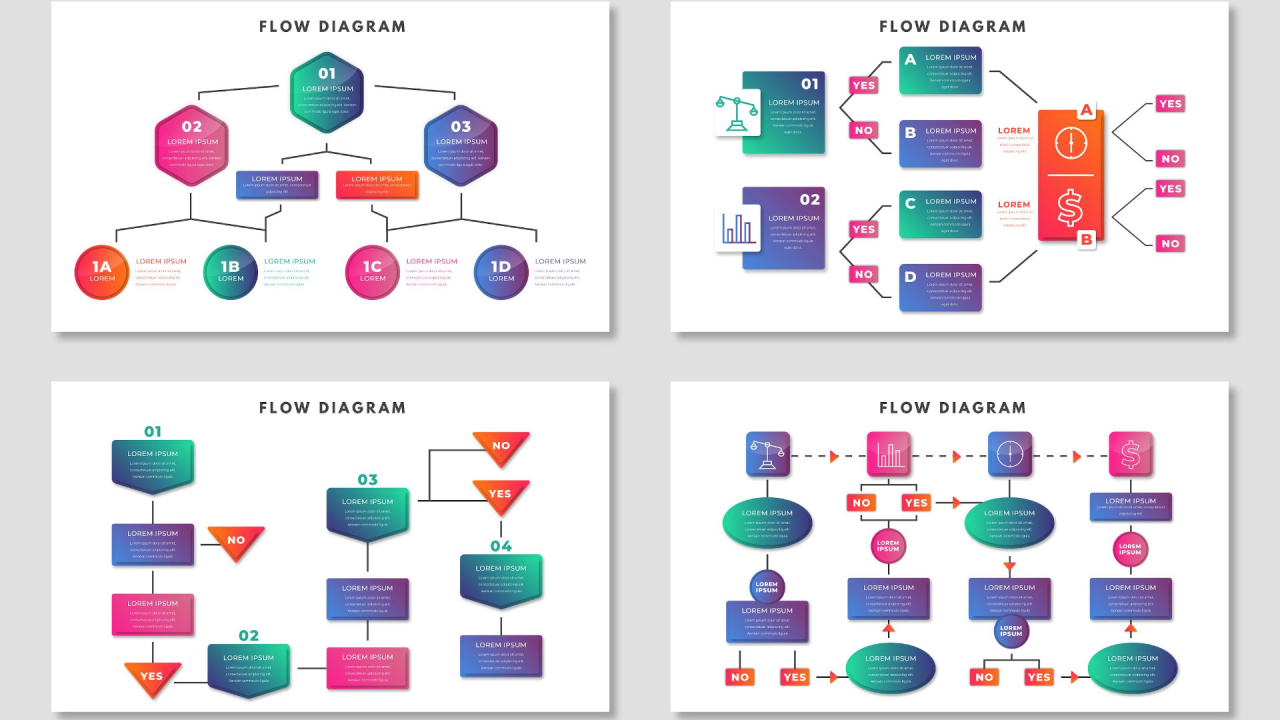– A Developer’s Guide
Embarking on a new web project can feel as exhilarating and daunting as selecting the right equipment for a high-stakes mission, much like Ethan Hunt in “Mission: Impossible.”
Choosing the right tech stack is critical to the success and sustainability of your project. The wrong decision can lead to inefficiencies, higher costs, and project delays, while the right one can propel your project to new heights.
Here’s a comprehensive guide to help you select the perfect tech stack for your next web project.
Understand Your Project Requirements
Just as Luke Skywalker needed to understand the Force, you must first understand the specific needs of your project. Every project has unique requirements that will influence your tech stack choices.
Key Considerations
- Project Size and Complexity: Is it a simple website or a complex web application?
- Performance Requirements: Do you need real-time updates, high traffic handling, or intensive data processing?
- Scalability: How much will your project need to scale in the future?
Example
For a complex web application requiring real-time data updates, technologies like Node.js for the backend and React for the frontend might be ideal due to their performance and scalability.
Evaluate Technology Options
Think of evaluating your tech stack like James Bond choosing his gadgets. Each component must serve a purpose and work seamlessly with others.
Key Considerations
- Frontend: Frameworks like React, Angular, or Vue.js offer different benefits in terms of speed, flexibility, and community support.
- Backend: Consider Node.js, Django, Ruby on Rails, or Laravel based on your project needs and developer expertise.
- Database: Choose between SQL (MySQL, PostgreSQL) and NoSQL (MongoDB, Firebase) databases based on your data structure and query requirements.
Example
A startup needing a quick go-to-market solution might choose React for the frontend, Node.js for the backend, and MongoDB for the database due to their ease of use and rapid development capabilities.
Consider Developer Expertise and Team Experience
Imagine assembling a crew like in “Ocean’s Eleven.” Each member’s expertise plays a crucial role in the mission’s success.
Key Considerations
- Team Skillset: Leverage the existing skills and experiences of your development team.
- Learning Curve: Consider the time and effort required for the team to learn new technologies.
- Community and Support: Choose technologies with strong community support and documentation.
Example
If your team is proficient in PHP and you need a robust backend framework, Laravel might be the best choice due to its extensive documentation and supportive community.
Assess Long-Term Maintenance and Support
Choosing the right tech stack isn’t just about starting strong; it’s about sustaining and growing, much like maintaining the Enterprise in “Star Trek.”
Key Considerations
- Long-Term Viability: Ensure the chosen technologies are not just trends but have a proven track record and future roadmap.
- Maintenance: Consider the ease of maintaining and updating the tech stack.
- Cost: Factor in the costs associated with development, hosting, and scaling.
Example
For a project with a long-term vision, choosing established technologies like Python with Django and PostgreSQL might be wise due to their stability and ongoing community support.
Hands-On: Creating a Tech Stack Checklist
Selecting the right tech stack for your web project is crucial for its success. Here’s a detailed, step-by-step checklist to guide you through the process:
1. Define Project Requirements
Identify the Project Scope:
- Size and Complexity: Determine whether your project is a simple website, a dynamic web application, or a large-scale enterprise system. For a simple site, lightweight frameworks like Vue.js might suffice, whereas a complex application may benefit from Angular or React combined with a robust backend framework.
- Functionality Needs: List out all the features and functionalities your project will require. For instance, do you need user authentication, real-time data updates, or complex data processing?
- User Load and Performance: Estimate the expected traffic and performance requirements. Projects anticipating high user loads might need scalable solutions like Node.js or Django.
Define Performance Requirements:
- Real-Time Data: If your project needs real-time data updates (like live notifications or chat applications), consider using WebSockets with Node.js or Django Channels.
- Speed and Latency: Evaluate the speed and latency requirements. Fast response times might necessitate choosing a performant frontend framework and optimizing backend queries.
Plan for Scalability:
- Vertical and Horizontal Scaling: Choose technologies that support both vertical scaling (enhancing server capabilities) and horizontal scaling (adding more servers). Technologies like Kubernetes can help manage scaling.
- Future Growth: Anticipate future expansion needs. Opt for a stack that can grow with your project, ensuring you won’t need to rearchitect as user numbers increase.
2. Evaluate Technology Options
Frontend Frameworks:
- React: Popular for its flexibility and strong community support. Ideal for complex UIs and single-page applications (SPAs).
- Angular: Offers a comprehensive solution with built-in features like dependency injection and two-way data binding. Great for large-scale applications.
- Vue.js: Known for its simplicity and ease of integration. Suitable for projects that require quick development and flexibility.
Backend Frameworks:
- Node.js: Provides an event-driven architecture, perfect for handling asynchronous operations and real-time applications.
- Django: A high-level Python framework that encourages rapid development and clean, pragmatic design. Best for projects requiring robust security and scalability.
- Laravel: A PHP framework known for its elegant syntax and ease of use. Great for building modern, full-stack web applications.
Database Solutions:
- SQL Databases:MySQL/PostgreSQL: Relational databases suitable for structured data and complex queries.MariaDB: An open-source alternative to MySQL, known for its speed and robustness.
- NoSQL Databases:MongoDB: Ideal for unstructured data and rapid development. Supports JSON-like documents.Firebase: Provides real-time data synchronization and is excellent for mobile and web applications.
Additional Considerations:
- Caching: Implement caching solutions like Redis or Memcached to improve performance by storing frequently accessed data in memory.
- CDN Integration: Use content delivery networks (CDNs) like Cloudflare to reduce latency and improve load times by serving content from servers closest to the user.
3. Consider Developer Expertise and Market Availability
Team Skillset:
- Current Knowledge: Evaluate the technologies your team is already familiar with. Leveraging existing expertise can reduce learning curves and speed up development.
- Training Needs: Consider the time and resources required to train your team on new technologies. Choose technologies with extensive documentation and community support to ease the learning process.
Learning Curve:
- Ease of Adoption: Some technologies have steeper learning curves. Balance the immediate benefits with the time needed for your team to become proficient.
- Support and Documentation: Opt for technologies with strong documentation, tutorials, and active communities. This can significantly aid in troubleshooting and learning.
Community and Support:
- Active Communities: Technologies with active communities provide faster support and more resources. Check forums, GitHub repositories, and social media groups for activity levels.
- Long-Term Viability: Choose technologies backed by established organizations or a large user base to ensure long-term support and regular updates.
Market Availability and Cost of Skilled Developers:
- Availability of Skilled Developers: Assess the availability of developers proficient in the chosen technologies. Mainstream technologies like JavaScript (React, Angular) and PHP have larger pools of skilled developers, making it easier to hire and scale your team.
- Cost Factors: More widely-used technologies often have more affordable developers due to supply and demand. Opting for mainstream technologies can reduce recruitment costs and salaries.
- Contracting and Freelance Options: Consider the availability of contractors and freelancers for short-term needs. Popular technologies offer a larger pool of freelancers, providing flexibility for scaling your team as needed.
Example
Choosing a tech stack with a robust developer community, such as React and Node.js, not only ensures better support but also a larger pool of affordable talent. This can significantly reduce development costs and improve time-to-market.
4. Assess Long-Term Maintenance and Support
Long-Term Viability:
- Technology Longevity: Research the history and development trajectory of the technologies. Prefer those with a proven track record and active development.
- Vendor and Community Support: Ensure there are sufficient resources for ongoing support, including community contributions and vendor-backed services.
Maintenance and Updates:
- Regular Updates: Choose technologies that receive regular updates and patches. This ensures security vulnerabilities and bugs are addressed promptly.
- Ease of Maintenance: Consider the ease of maintaining and updating the tech stack. Well-documented technologies with clear versioning practices simplify ongoing maintenance.
Cost Considerations:
- Initial Development Costs: Calculate the initial costs, including licenses, tools, and development resources.
- Operational Costs: Factor in the costs of hosting, scaling, and maintaining the tech stack. Consider cloud services and their pricing models.
- Total Cost of Ownership (TCO): Assess the overall TCO, including development, maintenance, and potential future scaling costs.
By following this detailed checklist, you can methodically evaluate and select a tech stack that aligns with your project’s goals and ensures long-term success.
The right tech stack can make your project more efficient, scalable, and maintainable, positioning you well for future growth.
#TechStack #WebDevelopment #Frontend #Backend #Database #ProjectManagement #DeveloperCommunity #WebProject #StartupTech #SoftwareDevelopment #Coding #Programming
Follow me on …
LinkedIn: https://www.linkedin.com/in/adyhrberg/


